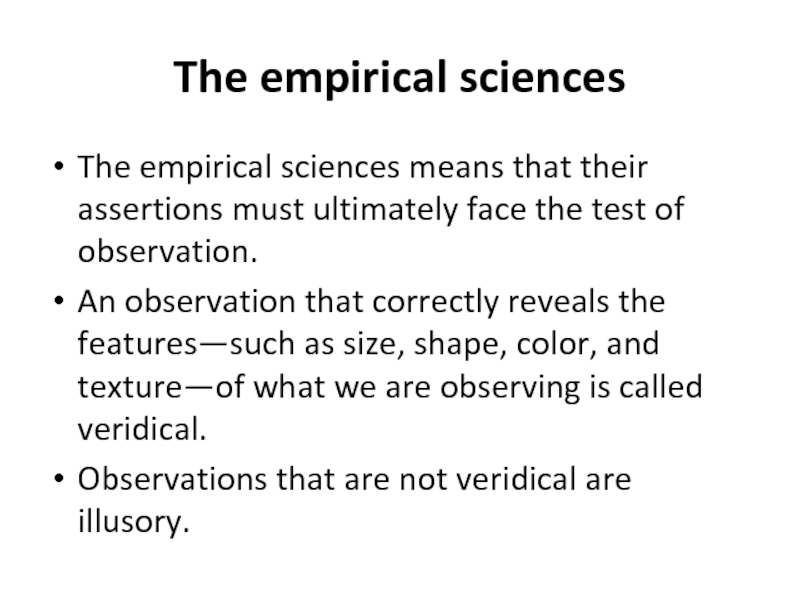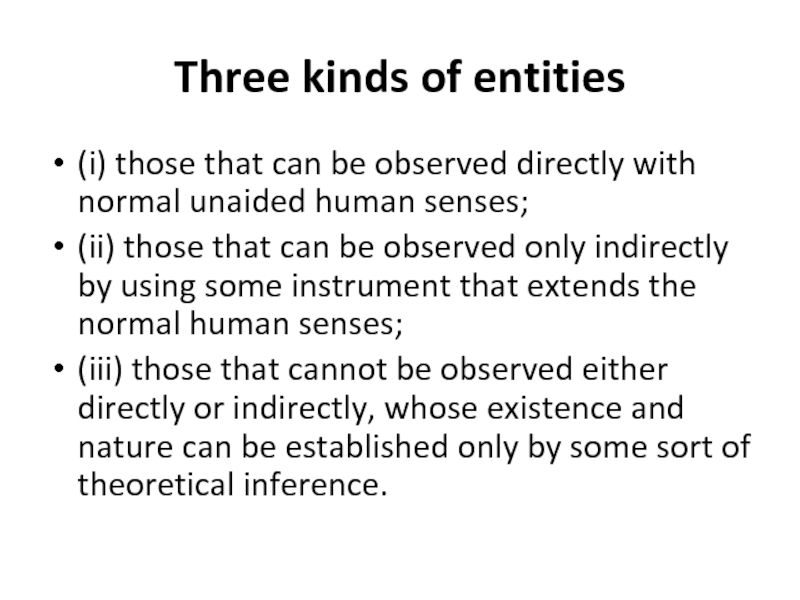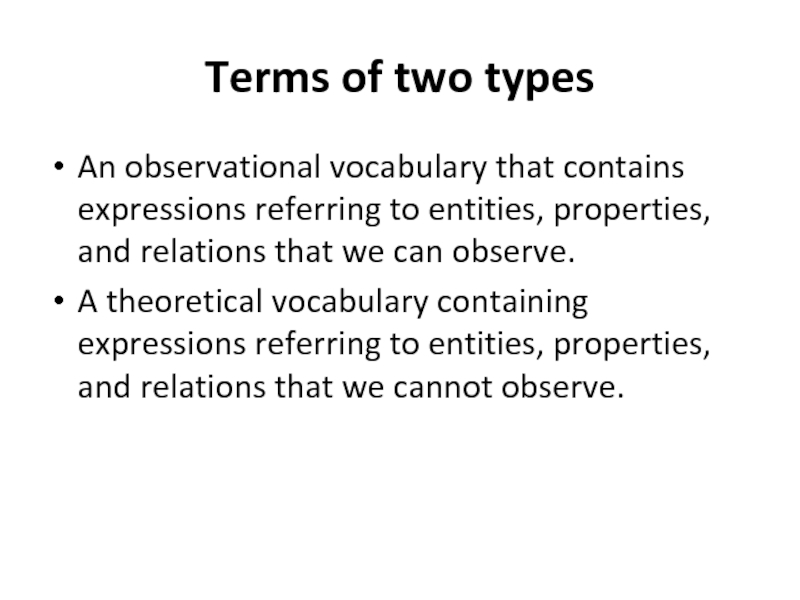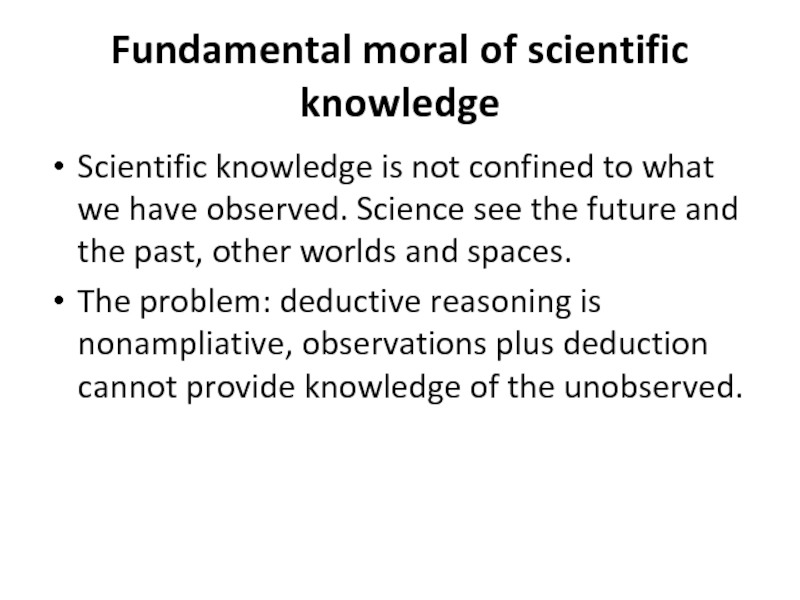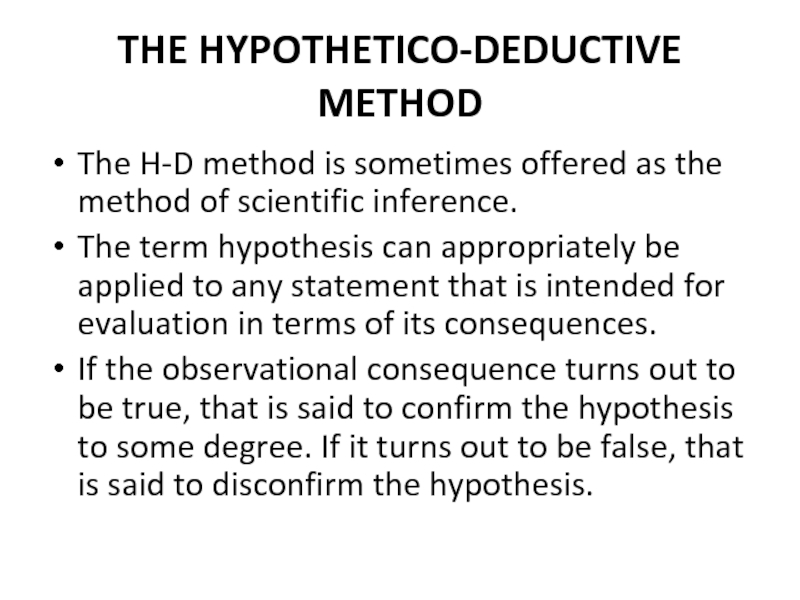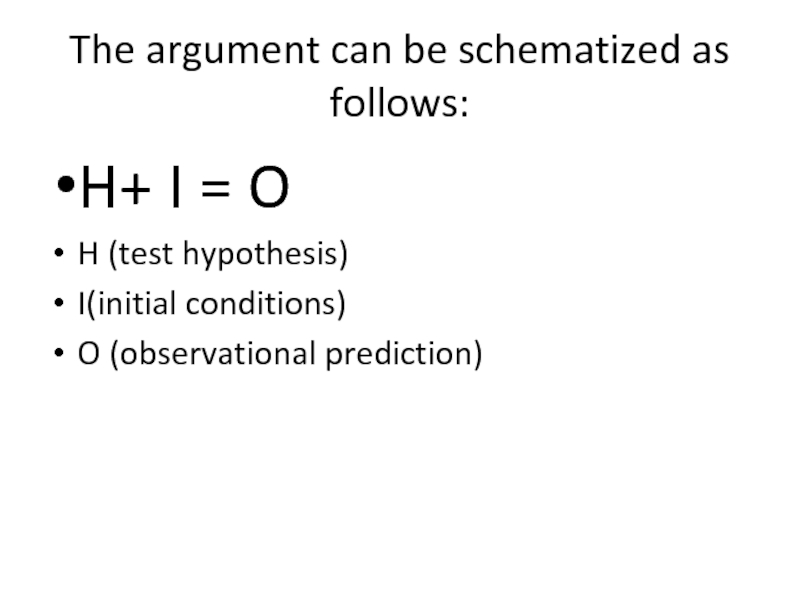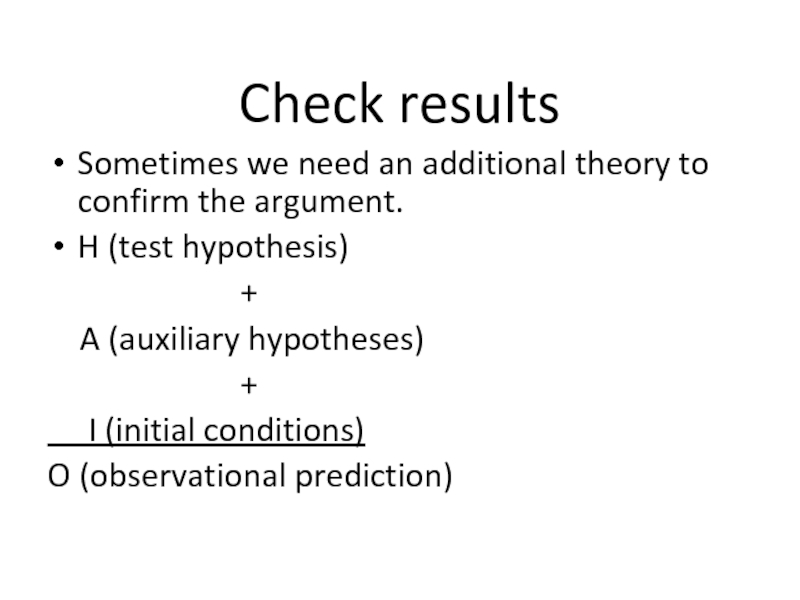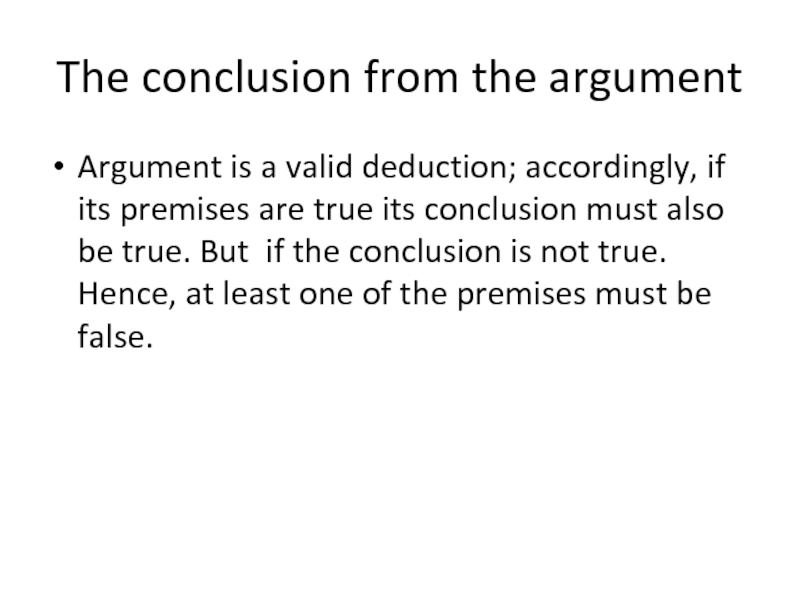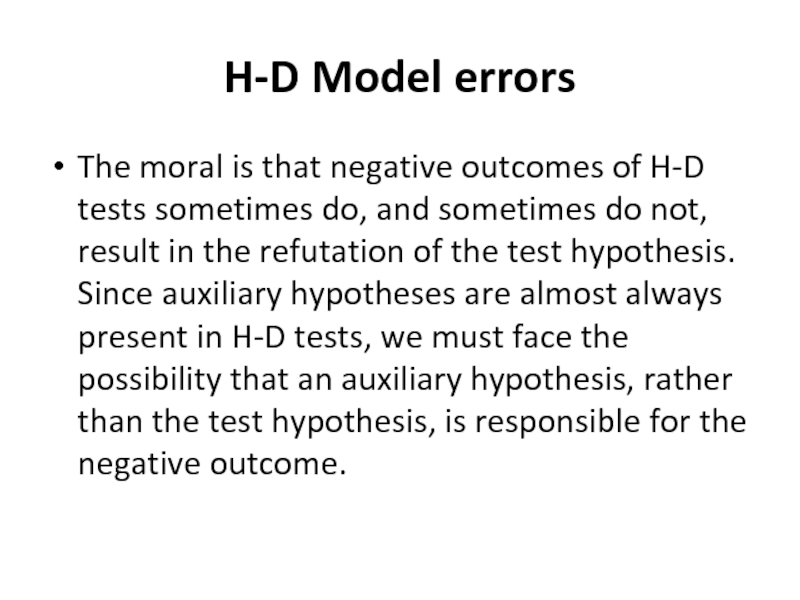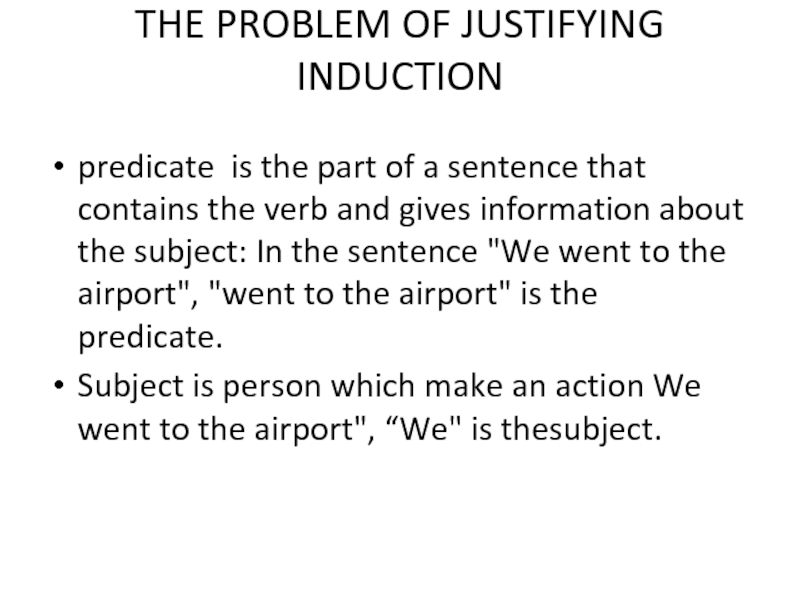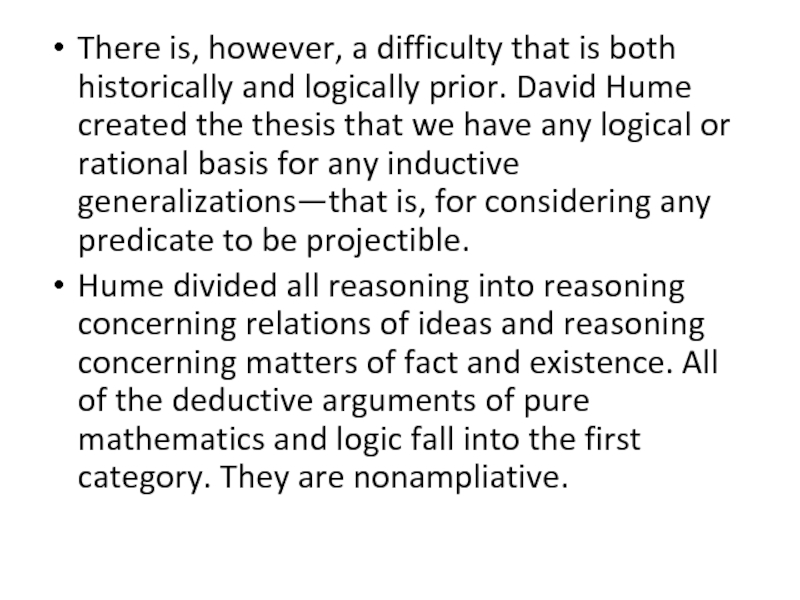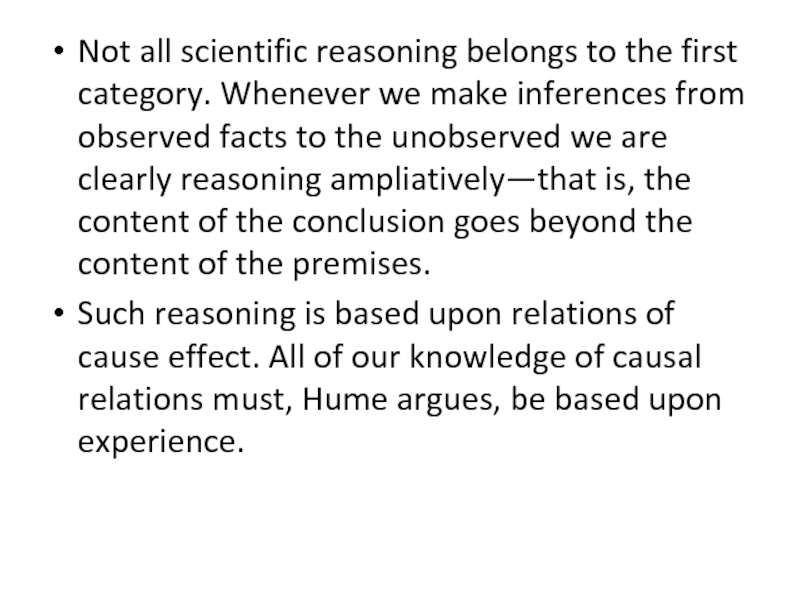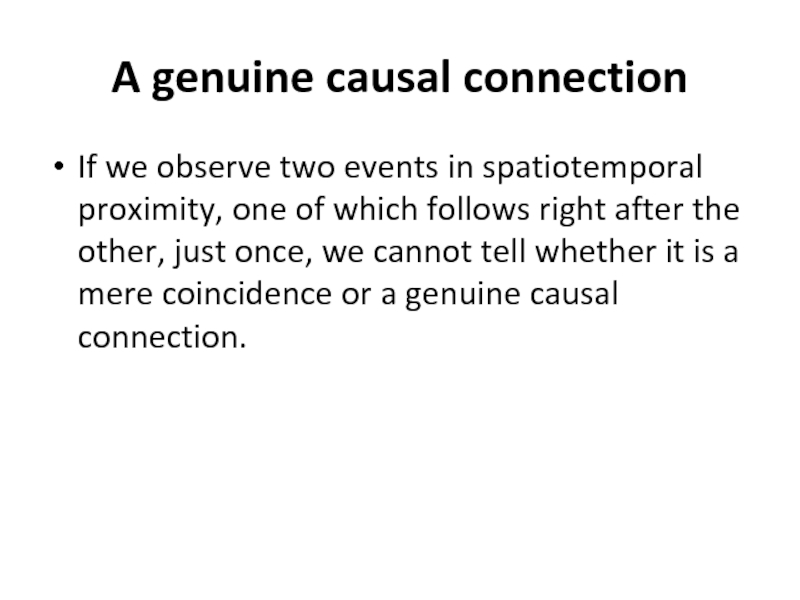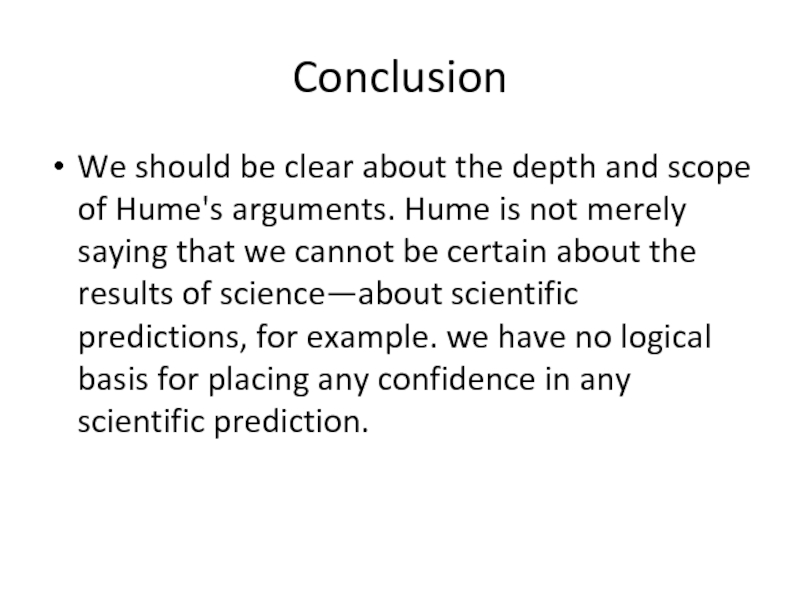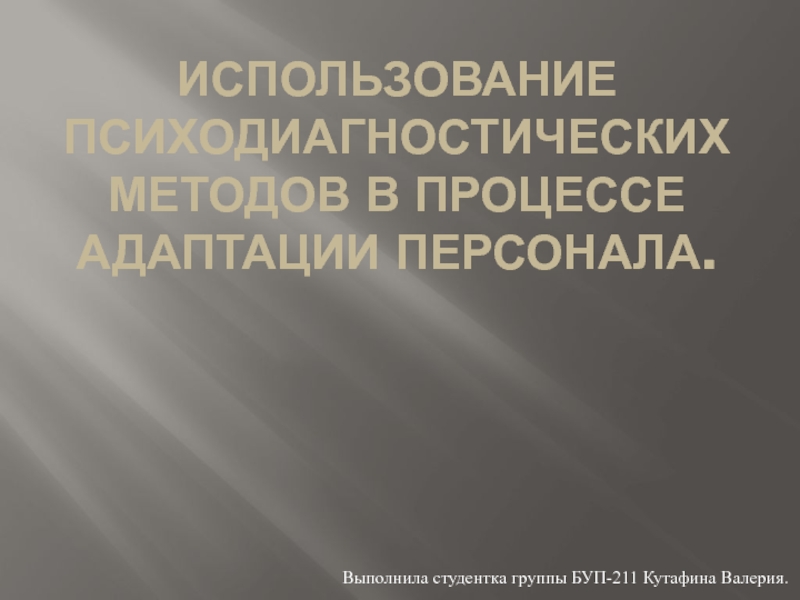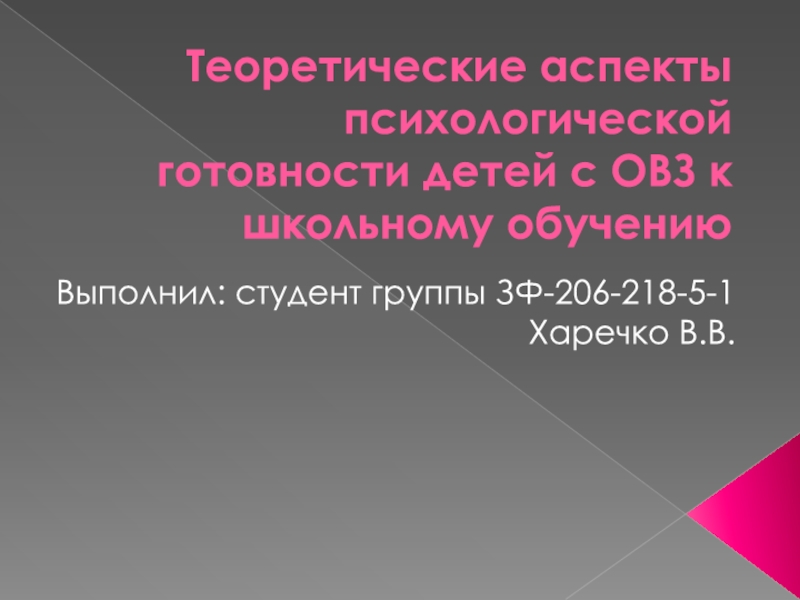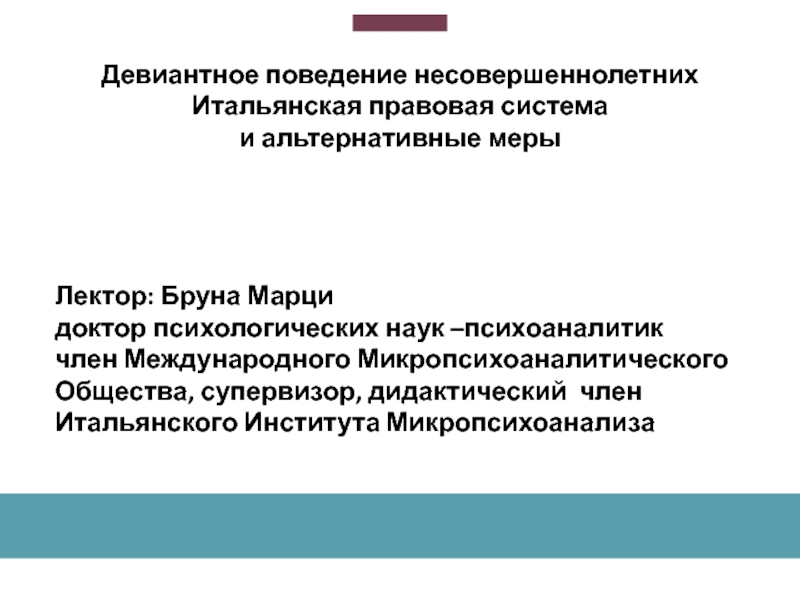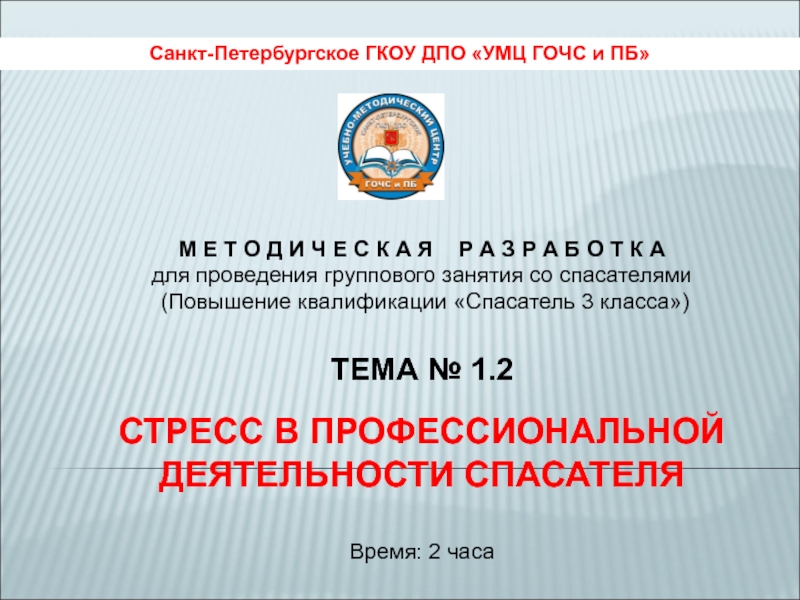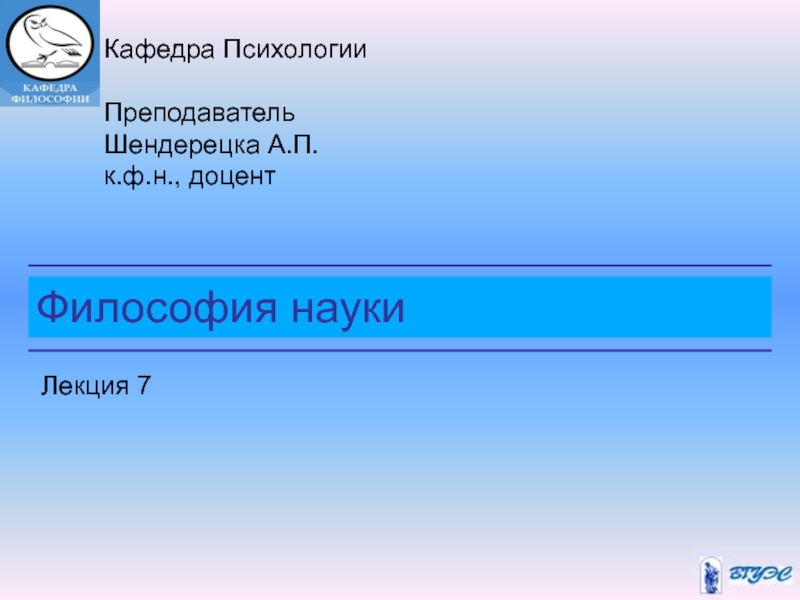- Главная
- Разное
- Дизайн
- Бизнес и предпринимательство
- Аналитика
- Образование
- Развлечения
- Красота и здоровье
- Финансы
- Государство
- Путешествия
- Спорт
- Недвижимость
- Армия
- Графика
- Культурология
- Еда и кулинария
- Лингвистика
- Английский язык
- Астрономия
- Алгебра
- Биология
- География
- Детские презентации
- Информатика
- История
- Литература
- Маркетинг
- Математика
- Медицина
- Менеджмент
- Музыка
- МХК
- Немецкий язык
- ОБЖ
- Обществознание
- Окружающий мир
- Педагогика
- Русский язык
- Технология
- Физика
- Философия
- Химия
- Шаблоны, картинки для презентаций
- Экология
- Экономика
- Юриспруденция
Empirical evidence презентация
Содержание
- 1. Empirical evidence
- 2. The empirical sciences The empirical sciences means
- 3. Three kinds of entities (i) those that
- 4. Terms of two types An observational vocabulary
- 5. Fundamental moral of scientific knowledge Scientific knowledge
- 6. THE HYPOTHETICO-DEDUCTIVE METHOD The H-D method is
- 7. The argument can be schematized as follows:
- 8. Check results Sometimes we need an
- 9. The conclusion from the argument Argument is
- 10. H-D Model errors The moral is that
- 11. THE PROBLEM OF JUSTIFYING INDUCTION
- 12. There is, however, a difficulty that is
- 13. Not all scientific reasoning belongs to the
- 14. A genuine causal connection If we observe
- 15. Conclusion We should be clear about
Слайд 2The empirical sciences
The empirical sciences means that their assertions must ultimately
face the test of observation.
An observation that correctly reveals the features—such as size, shape, color, and texture—of what we are observing is called veridical.
Observations that are not veridical are illusory.
An observation that correctly reveals the features—such as size, shape, color, and texture—of what we are observing is called veridical.
Observations that are not veridical are illusory.
Слайд 3Three kinds of entities
(i) those that can be observed directly with
normal unaided human senses;
(ii) those that can be observed only indirectly by using some instrument that extends the normal human senses;
(iii) those that cannot be observed either directly or indirectly, whose existence and nature can be established only by some sort of theoretical inference.
(ii) those that can be observed only indirectly by using some instrument that extends the normal human senses;
(iii) those that cannot be observed either directly or indirectly, whose existence and nature can be established only by some sort of theoretical inference.
Слайд 4Terms of two types
An observational vocabulary that contains expressions referring to
entities, properties, and relations that we can observe.
A theoretical vocabulary containing expressions referring to entities, properties, and relations that we cannot observe.
A theoretical vocabulary containing expressions referring to entities, properties, and relations that we cannot observe.
Слайд 5Fundamental moral of scientific knowledge
Scientific knowledge is not confined to what
we have observed. Science see the future and the past, other worlds and spaces.
The problem: deductive reasoning is nonampliative, observations plus deduction cannot provide knowledge of the unobserved.
The problem: deductive reasoning is nonampliative, observations plus deduction cannot provide knowledge of the unobserved.
Слайд 6THE HYPOTHETICO-DEDUCTIVE METHOD
The H-D method is sometimes offered as the method
of scientific inference.
The term hypothesis can appropriately be applied to any statement that is intended for evaluation in terms of its consequences.
If the observational consequence turns out to be true, that is said to confirm the hypothesis to some degree. If it turns out to be false, that is said to disconfirm the hypothesis.
The term hypothesis can appropriately be applied to any statement that is intended for evaluation in terms of its consequences.
If the observational consequence turns out to be true, that is said to confirm the hypothesis to some degree. If it turns out to be false, that is said to disconfirm the hypothesis.
Слайд 7The argument can be schematized as follows:
H+ I = O
H
(test hypothesis)
I(initial conditions)
O (observational prediction)
I(initial conditions)
O (observational prediction)
Слайд 8
Check results
Sometimes we need an additional theory to confirm the argument.
H
(test hypothesis)
+
A (auxiliary hypotheses)
+
I (initial conditions)
O (observational prediction)
+
A (auxiliary hypotheses)
+
I (initial conditions)
O (observational prediction)
Слайд 9The conclusion from the argument
Argument is a valid deduction; accordingly, if
its premises are true its conclusion must also be true. But if the conclusion is not true. Hence, at least one of the premises must be false.
Слайд 10H-D Model errors
The moral is that negative outcomes of H-D tests
sometimes do, and sometimes do not, result in the refutation of the test hypothesis. Since auxiliary hypotheses are almost always present in H-D tests, we must face the possibility that an auxiliary hypothesis, rather than the test hypothesis, is responsible for the negative outcome.
Слайд 11THE PROBLEM OF JUSTIFYING INDUCTION
predicate is the part of a
sentence that contains the verb and gives information about the subject: In the sentence "We went to the airport", "went to the airport" is the predicate.
Subject is person which make an action We went to the airport", “We" is thesubject.
Subject is person which make an action We went to the airport", “We" is thesubject.
Слайд 12There is, however, a difficulty that is both historically and logically
prior. David Hume created the thesis that we have any logical or rational basis for any inductive generalizations—that is, for considering any predicate to be projectible.
Hume divided all reasoning into reasoning concerning relations of ideas and reasoning concerning matters of fact and existence. All of the deductive arguments of pure mathematics and logic fall into the first category. They are nonampliative.
Hume divided all reasoning into reasoning concerning relations of ideas and reasoning concerning matters of fact and existence. All of the deductive arguments of pure mathematics and logic fall into the first category. They are nonampliative.
Слайд 13Not all scientific reasoning belongs to the first category. Whenever we
make inferences from observed facts to the unobserved we are clearly reasoning ampliatively—that is, the content of the conclusion goes beyond the content of the premises.
Such reasoning is based upon relations of cause effect. All of our knowledge of causal relations must, Hume argues, be based upon experience.
Such reasoning is based upon relations of cause effect. All of our knowledge of causal relations must, Hume argues, be based upon experience.
Слайд 14A genuine causal connection
If we observe two events in spatiotemporal proximity,
one of which follows right after the other, just once, we cannot tell whether it is a mere coincidence or a genuine causal connection.
Слайд 15Conclusion
We should be clear about the depth and scope of
Hume's arguments. Hume is not merely saying that we cannot be certain about the results of science—about scientific predictions, for example. we have no logical basis for placing any confidence in any scientific prediction.

